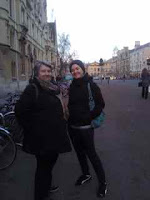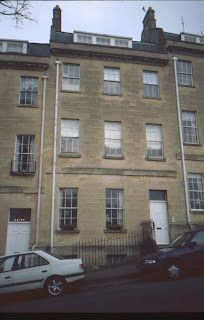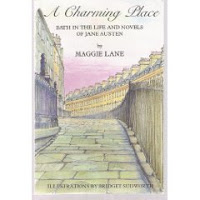One of the joys of writing Historical Romance is the research and the best way to research is to go to the places you write about.
Some writers get a story idea and then they go to the location of the story and do some research. Me, I visit a place and then make up a story using that setting.
That’s what I did for A Lady Becomes a Governess, Book 1 of my Governess Swap series, out this month from Harlequin Historical and Mills and Boon Historical. A Lady Becomes a Governess was mostly set in the Lake District. I visited the Lake District (and fell in love with it) on my last England trip with Kristine Hughes Patrone’s Number One London Tours.
Kristine and I also spent a day in Bath–the hottest day of the year there–90 degrees F. We walked Bath from one end to the other, seeing most of the famous buildings and streets, so when I needed a setting for Book 2 of my Governess Swap series, Bath was perfect.
My hero and heroine needed to walk Bath much like Kristine and I did. They walked from the Pump Room to the Royal Crescent to the Upper Assembly Rooms. Because I’d been there last year, I remembered vaguely where things were, but, for the book, I needed a map so I could be as accurate as possible.
I found a very cool one, HERE. It shows a present day map that can be overlaid with a historic map. You can move the circle to anywhere on the modern day map. My book is set in 1816, so I used the map from 1818.
 This gave me the names of the streets in 1818, some of which were different than today.
This gave me the names of the streets in 1818, some of which were different than today.
Of course my hero and heroine had to visit the Royal Crescent and the Circus.
 As I was researching the Royal Crescent and the Circus, I discovered that a navy Admiral, Admiral Sir Richard Bickerton, lived in the Circus and he fit perfectly into my book! I love when that happens.
As I was researching the Royal Crescent and the Circus, I discovered that a navy Admiral, Admiral Sir Richard Bickerton, lived in the Circus and he fit perfectly into my book! I love when that happens.
I also needed two inns and a little searching led me to the AustenOnly blog and to the White Hart Inn, which was where Jane Austen had the Musgroves staying in Persuasion. The White Hart was torn down in 1869, but this wonderful blog even had a picture of the inn.
The second inn was where I briefly had my hero and heroine stay. The Westgate Inn was where the Royal Mail coaches stopped.
This year I’m going to Scotland with Kristine and Number One London Tours. I’ve never set a book in Scotland…….Here’s to a first time!
Do you ever use travel to inspire a story? Do you like to visit places where books, TV, or movies were set?
 By the way, A Lady Becomes a Governess is available now in both ebook and paperback if ordered directly from Harlequin. The paperback will be at other online vendors June 19 and the ebook on July 1.
By the way, A Lady Becomes a Governess is available now in both ebook and paperback if ordered directly from Harlequin. The paperback will be at other online vendors June 19 and the ebook on July 1.




















